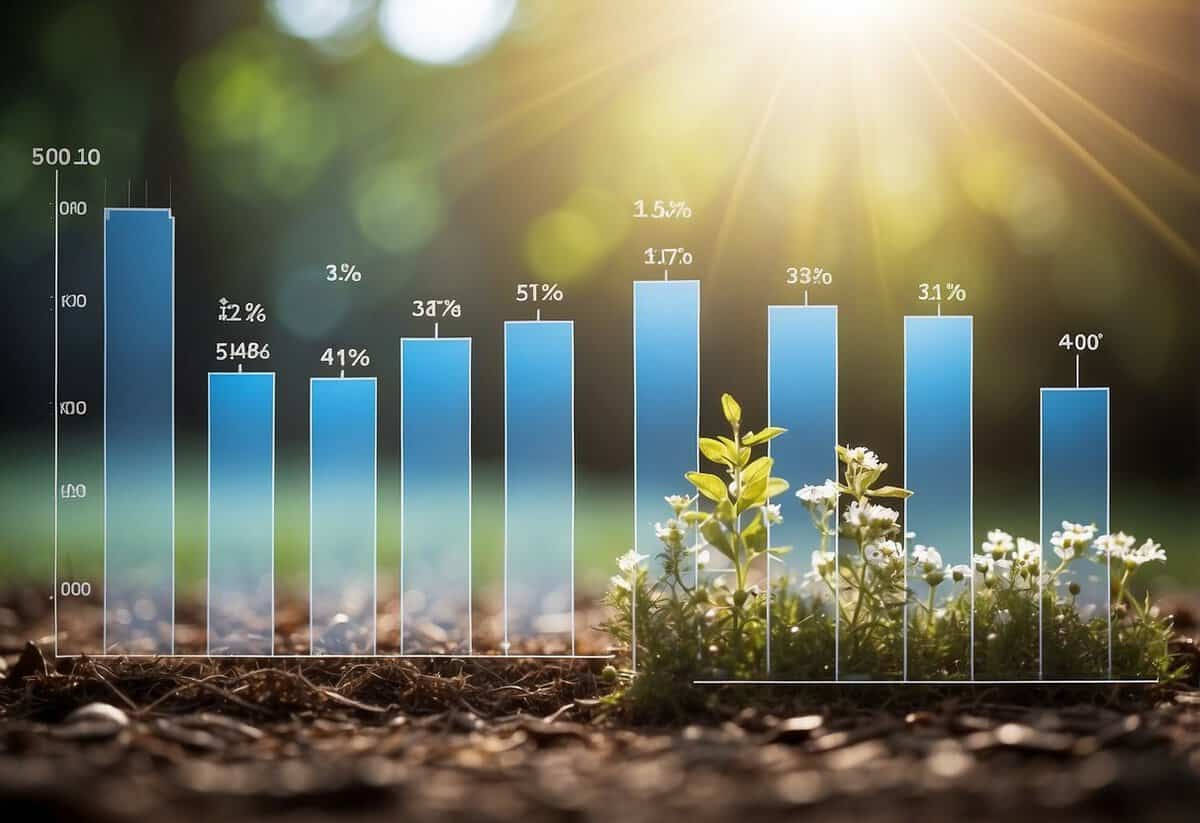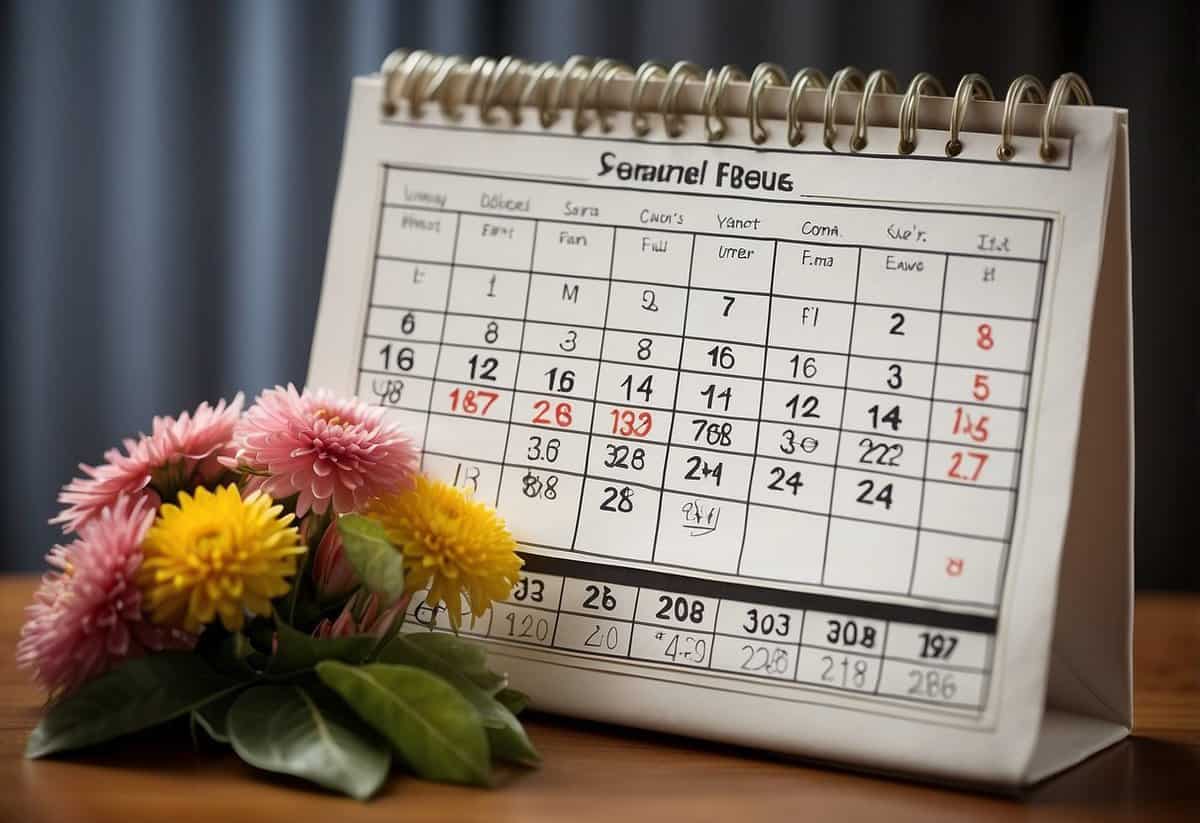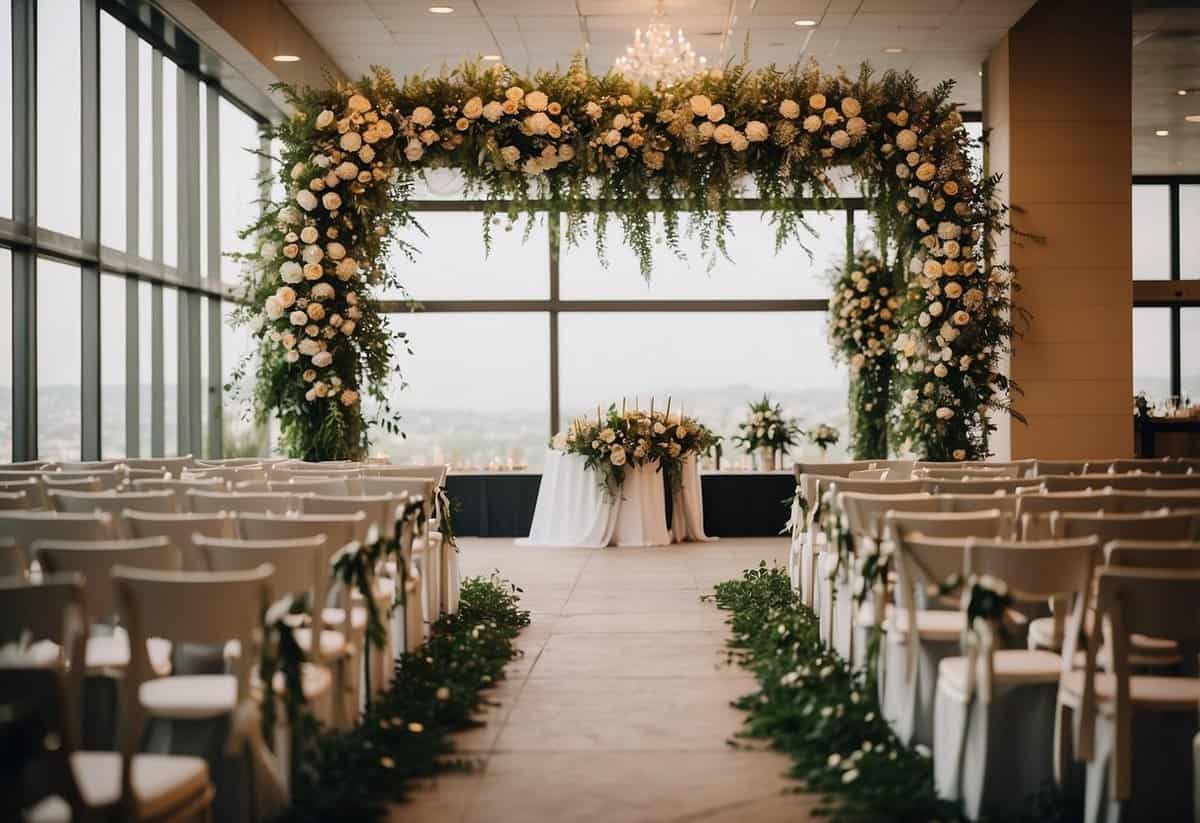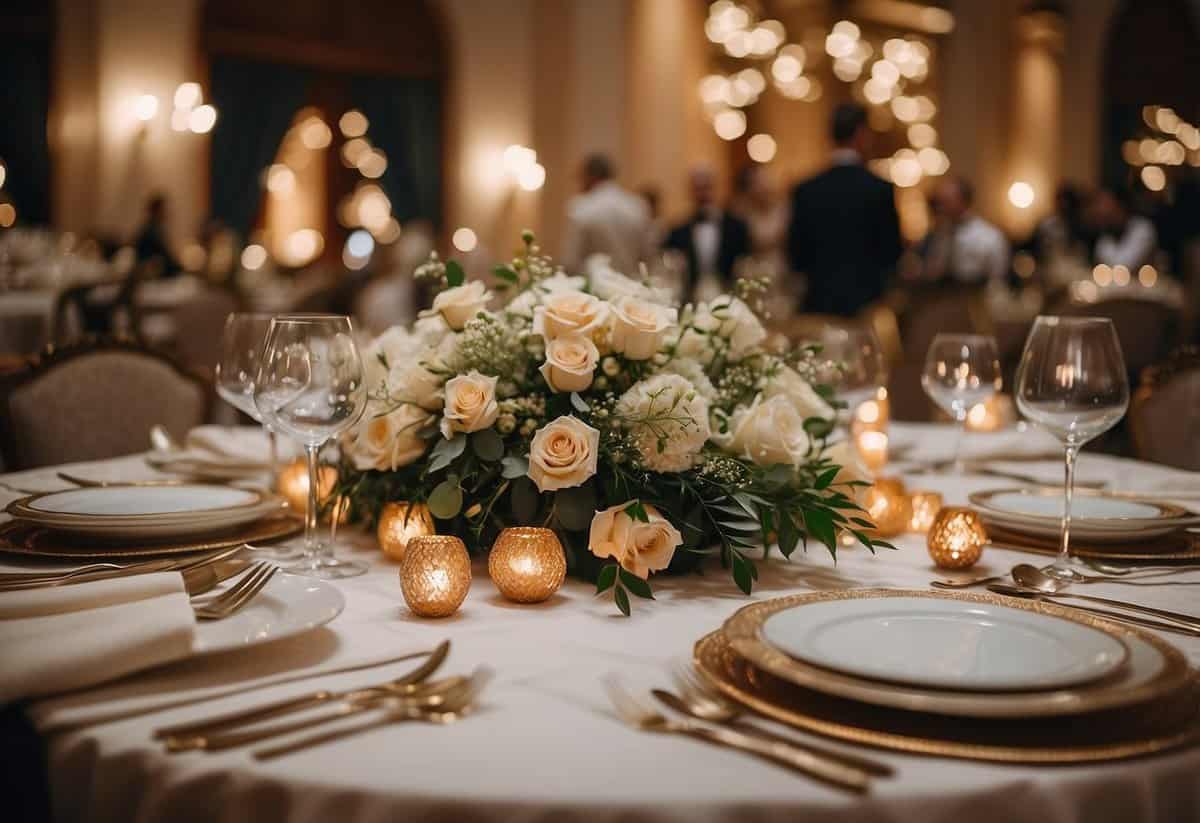The Impact of Seasonality on Wedding Costs in the US: How Timing Affects Your Budget
Planning a wedding is an exciting journey, but it can also be expensive.
Seasonality plays a huge role in wedding costs in the US.
During peak wedding season, typically from late spring to early fall, venues and vendors are in high demand.
This often leads to higher prices for everything from caterers to photographers.

If you’re looking to save money, consider choosing a date outside the popular months.
Winter weddings, for example, can be significantly less expensive.
Venues are often more readily available, and you may even score discounts on various services.
Another option is to book your wedding on a weekday instead of a weekend.
Weekday weddings can also help reduce costs, as vendors and venues tend to have more availability.
By understanding how seasonality affects wedding costs, you can plan a beautiful wedding that doesn’t break the bank.
Understanding Wedding Seasonality

Wedding seasonality plays a crucial role in planning your big day, as it affects both the availability and the costs.
Knowing when is the peak and off-season for weddings can help you make informed decisions.
Peak vs. Off-Season Weddings
The peak wedding months in the United States are typically May, June, September, and October.
These months are chosen for their usually pleasant weather, which is ideal for outdoor ceremonies and receptions.
During these times, venues and vendors are in high demand, leading to higher prices and limited availability.
In contrast, off-season weddings take place during months like January, February, and July.
These months are less popular due to extreme weather conditions.
Having your wedding during off-season can result in significant cost savings. Venues often offer discounts and are more flexible with dates.
You may also have better luck booking popular vendors who are otherwise fully booked during peak seasons.
Reasons for Seasonal Popularity
Many couples prefer to get married during peak wedding seasons because of the favorable weather.
Spring and fall offer mild temperatures and beautiful scenery, which are perfect for outdoor events.
Another factor is social schedules.
Many people plan their vacations around summer and winter holidays, making it easier for them to attend weddings in late spring and early fall.
Additionally, popular wedding trends often tie into seasonal themes.
For example, a fall wedding might feature rich, warm colors and autumnal décor, which are appealing to many couples.
Budgeting for Your Big Day

Planning a wedding involves setting a realistic budget and allocating funds efficiently.
It’s crucial to prioritize your spending to ensure a memorable event without financial stress.
Establishing a Wedding Budget
Start by determining how much you can afford to spend on your wedding.
Consider your savings, income, and any contributions from family.
Use a budgeting tool or spreadsheet to track your expenses.
Communication with your partner is key to agree on the total amount.
List your must-haves and nice-to-haves. This helps in deciding where to splurge and where to save.
Research local vendors to get an idea of prices for venues, catering, and photography.
Don’t forget hidden costs like taxes and gratuities.
A good rule of thumb is to allocate a contingency fund, about 10% of your budget, for unexpected expenses.
This way, you avoid last-minute financial stress.
Allocating Funds to Wedding Components
Divide your budget based on the main components of a wedding.
Using guides like those from David’s Bridal, you might allocate:
- Venue and Catering: 40%-50%
- Music and Entertainment: 10%
- Flowers and Décor: 10%
- Attire: 5%-7%
- Transportation: 3%-5%
- Stationery: 3%
Adjust these percentages based on what matters most to you.
For example, if photography is a priority, you might spend more there and cut back on décor.
Tracking each expense is crucial.
Use apps or a simple spreadsheet to record payments and balance your budget.
This ensures you stay within your limits and can adjust spending if needed.
Venue and Vendor Considerations

Choosing the right location and working with wedding vendors can significantly impact your budget. Spend some time researching and negotiating to ensure everything fits your vision and your budget.
Choosing the Right Wedding Venue
Selecting the perfect venue is crucial.
The type, size, and location of your venue greatly influence your costs.
Popular months tend to be pricier. For instance, summer weddings might cost more because venues are in higher demand.
Consider different venue types such as gardens, barns, or ballrooms. Each has its own price range.
Also, think about your guest list. Larger venues typically cost more in terms of decorations, catering, and rentals.
Some venues offer all-inclusive packages. These can save you money by bundling services like catering, decorations, and rentals.
Always tour potential venues and ask about what’s included in the rental fee.
This will help you avoid unexpected expenses later on.
Negotiating with Vendors
Working with wedding vendors involves a lot of communication and negotiation.
Speak to photographers, florists, and caterers early. Many vendors get booked well in advance, especially in peak wedding seasons.
Comparison shopping is essential.
Request quotes from multiple vendors to understand the going rates. This can give you leverage when negotiating prices.
Some vendors may offer discounts for off-season weddings or weekday events.
Don’t hesitate to ask. Discuss your budget openly.
Vendors often have packages that can be adjusted to better meet your financial needs.
Finally, always get everything in writing.
Contracts should clearly outline services, prices, and deadlines. This helps prevent any confusion and ensures both parties are on the same page.
Wedding Attire and Aesthetics

When planning a wedding, the time of year significantly impacts your choices for wedding attire and decor. You need to choose designs and materials that match both the weather and the current trends in aesthetics.
Selecting Seasonal Wedding Attire
The season plays a crucial role in selecting your wedding attire.
For a summer wedding, you might pick lighter fabrics like chiffon or organza for your wedding dress.
These materials keep you cool and comfortable. Short sleeves or strapless gowns are popular choices for the warm months.
In winter, thicker fabrics like satin or velvet offer warmth and elegance.
Long sleeves and high necklines are often chosen to add a touch of sophistication. Don’t forget accessories like elegant shawls or capes to stay warm without sacrificing style.
For spring or fall weddings, consider the variable weather.
Layered dresses or those with removable sleeves provide flexibility.
Selecting colors that reflect the season—pastels for spring and deeper hues for fall—enhances the seasonal aesthetic.
Decor and Floral Arrangements
Decor and floral arrangements are integral to setting the mood.
In the spring, fresh flowers like tulips and peonies bring a burst of color and life.
You might opt for soft linens and pastel-colored decor to reflect the freshness of the season.
Summer weddings benefit from bold and vibrant decor.
Consider tropical flowers like orchids or hibiscus and bright, cheerful colors for the decorations.
Outdoor setups with light fabrics and minimal accessories can create a relaxed, laid-back vibe.
Fall decor often includes richer tones like burgundy and gold. Rustic elements such as wood signs and lanterns fit perfectly. Seasonal flowers such as dahlias and marigolds add warmth to the atmosphere.
For winter weddings, think about elegant and cozy decor.
Whites, silvers, and deep reds are popular choices.
Evergreen branches and white roses can add a timeless touch. Adding elements like candles and fairy lights can create a warm and inviting ambiance even on the coldest days.
Food, Entertainment, and Extra Touches

Choosing the right catering and entertainment can significantly affect your wedding costs. Your choices in these areas are crucial as they can make your event memorable for your guests.
Catering Choices
The cost of catering depends on your menu and serving style.
A sit-down meal often requires more staff. It is generally more expensive than a buffet or food stations.
Buffets allow guests to serve themselves. They can include a variety of dishes. Meanwhile, food stations offer specialized food options such as a sushi bar or dessert station, adding a unique touch.
Don’t forget to consider the type of cuisine you want. Traditional American fare is typically less costly than exotic dishes like sushi or tapas.
Seasonal ingredients can be more affordable and fresher. They can impact your food quality and cost positively or negatively.
Selecting Entertainment Options
When planning for entertainment, a big decision is choosing between a DJ and a live band.
DJs are generally less expensive. They start at around $1,000 and can offer a wide range of music. They also take up less space, which might be important for smaller venues.
Live bands provide a more dynamic atmosphere but can cost anywhere from $2,000 to $6,000 or more. Bands often need more space for their setup and might require extra equipment, adding to the cost.
Additionally, consider extra touches such as photo booths. These can be fun for guests and create lasting memories.
Including a live band or DJs at your wedding could result in an unforgettable experience but will impact your budget significantly.


